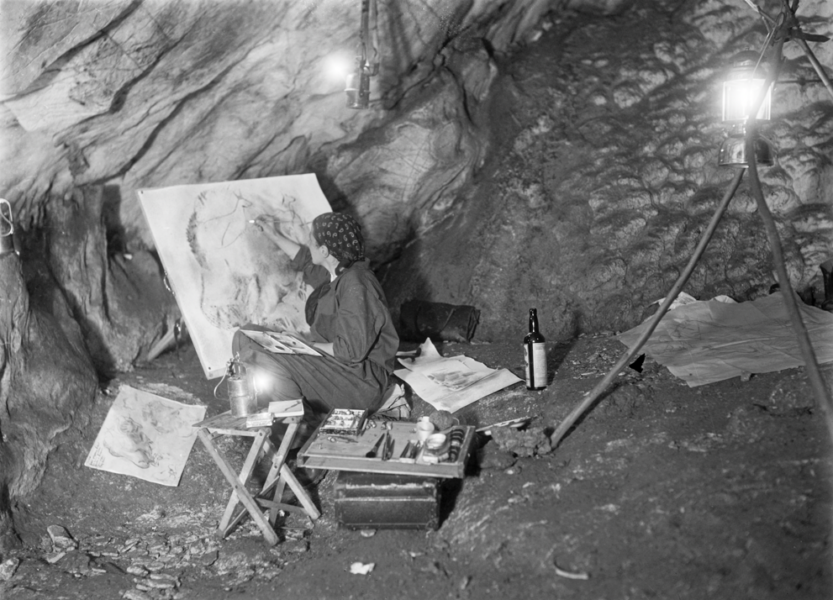
‘Hollow Earth: Art, Caves, and the Subterranean Imaginary’ opens at the Royal Albert Memorial Museum & Art Gallery on the 23rd of September. The show initially opened at the Nottingham Contemporary last year and has since made its way to Exeter. ‘Hollow Earth’ is free of charge and invites visitors to consider the tumultuous relationship between the artist and the cave throughout recorded history.
This ground-breaking exhibit is divided into five sections and echoes the journey into a cave, starting at the threshold and ending in the depths. ‘Hollow Earth’ features major works by the Victorian painter Sir Joseph Wright of Derby, famous Surrealist René Magritte, abstract artist Henry Moore, contemporary filmmaker Michael Ho, and Guyanese expressionist painter Aubrey Williams, as well as new commissions including large-scale watercolour paintings from Chioma Ebinama and a film installation by Lydia Ourahmane.
The arrival of this exhibition reminds the community of Devon’s unique place in history as the birthplace of cave-hunting. Declared by William Pengelly, the Victorian pioneer of systemic cave research in England, the county contains some of the UK’s most important prehistoric cave deposits. Objects from RAMM’s collection will be on display including a selection of extinct animal bones and antiquities found in caves from around the world. Spanning works by more than 30 artists, the exhibition descends into the depths to consider questions of thresholds, darkness and prehistory.
‘it is appropriate that Hollow Earth is shown here in Exeter considering the importance of Devonshire caverns to William Pengelly’s ground-breaking work on systemic cave research and conservation. I’m sure RAMM’s audiences will find this extensive and varied overview of the cultural significance of the underground through art both fascinating and thought-provoking.’
Councillor Laura Wright, Exeter City Council’s lead for Culture and City Centre Strategy, commented that ‘it is appropriate that Hollow Earth is shown here in Exeter considering the importance of Devonshire caverns to William Pengelly’s ground-breaking work on systemic cave research and conservation. I’m sure RAMM’s audiences will find this extensive and varied overview of the cultural significance of the underground through art both fascinating and thought-provoking.’
For thousands of years, these portals to the deep past have captivated artists and as society has evolved, artistic responses have also shifted. Following 19th-century discoveries of rock paintings, caves have been imagined as spaces of revelation, providing clues to the origin of our collective impulse to produce and display images. After World War II artists came to associate the cave with the primordial creative space and a refuge from the atomic era. Today, in an age of ecological breakdown, caves are portals to both the deep past and troubled futures, places where species and time intermingle. The vast collection of subterranean artworks in ‘Hollow Earth’ begs the important question of why caves have been so crucial to human and artistic development.
‘Hollow Earth’ will be on display until the 7th of January 2024.


